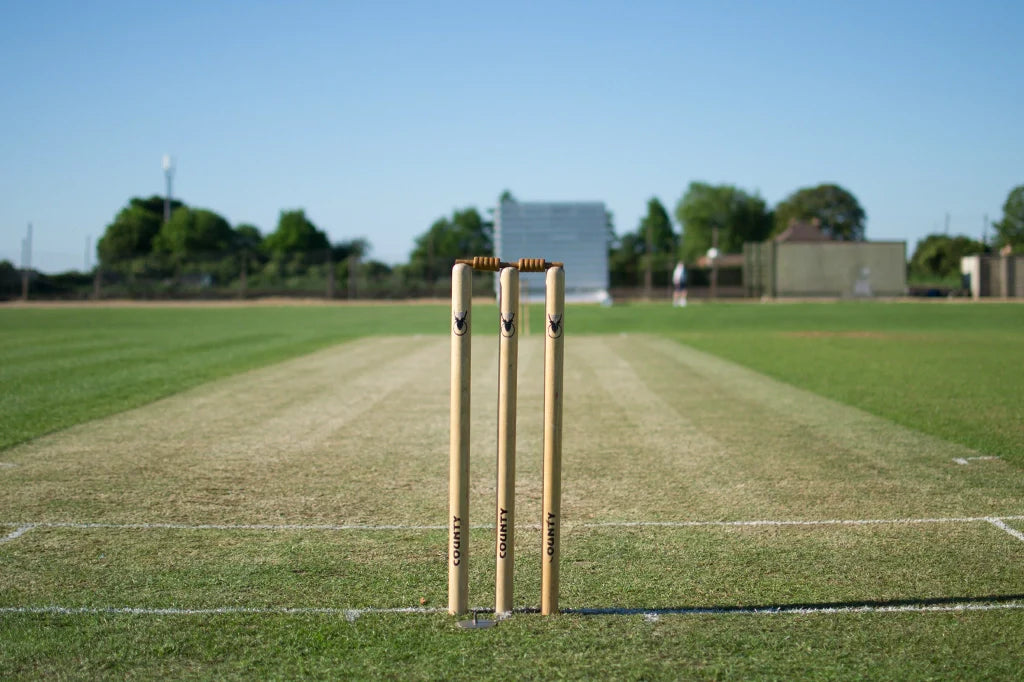

You’ve trained for weeks. Your bat feels light, your reflexes sharp. But after a couple of overs, nothing goes to plan — the ball swings wildly, the pitch feels unpredictable, and your strategy crumbles. What happened?
In cricket, nature plays its own game. Weather and pitch conditions don’t just influence the match — they can completely control it. Understanding how these elements affect your performance isn’t just for professionals; it’s essential for anyone who wants to outsmart the game, not just play it.
Weather isn’t background noise in cricket — it’s a silent player influencing every ball.
Sunny, Dry Weather :
Hot, dry conditions harden the pitch, offering consistent bounce and speed. This is paradise for batters — they can time shots cleanly and play on the rise. But as the sun bakes the surface, cracks develop, making the pitch unpredictable. Later in the game, bowlers — especially spinners — can exploit this.
Overcast and Humid Conditions :
Cloud cover + humidity = perfect swing bowling conditions. The ball moves in the air more sharply, often late, which makes life tough for batters. Fast bowlers love this — it’s their time to shine.
Rain and Moisture :
Rain can turn a good pitch into a slow, sticky surface. It reduces bounce, dampens pace, and makes the outfield heavy. Scoring slows down, and running between wickets becomes risky. Matches under these conditions often favor disciplined, adaptable teams.
Night and Day-Night Matches :
Playing under lights brings dew, making the pitch wet and slippery. This affects bowlers’ grip, reducing spin and swing, but helps batters. Artificial lighting can affect visibility, and captains often adjust toss decisions based on dew.
Understanding Pitch Conditions :
If the weather is the sky's message, the pitch is the ground’s language — and it speaks loudly if you know what to look for.
Fresh, Green Pitches :
Often have live grass that helps fast bowlers. Expect seam movement and early trouble for batters.
Dry, Cracked Pitches :
These tend to favor spin as the match wears on. Cracks and dryness help the ball grip and turn sharply. Playing spin late and with soft hands becomes crucial.
Turf vs. Matting :
- Turf pitches (natural grass) evolve during the match. They reflect weather changes and can be unpredictable — just like international-level cricket.
- Matting pitches (artificial): are more consistent. You’ll see even bounce, less wear and tear, and fewer surprises. They’re common in local leagues and training grounds across the U.S.
Beyond the Pitch: Ground and Outfield Conditions
Fast, Smooth Outfield:
Encourages boundaries. Fielders need to stay sharp.Slow, Damp Outfield:
Slows the ball down, makes diving risky and can turn easy twos into tricky singles.Poor Drainage:
Waterlogged grounds delay play and pose injury risks.Always walk the field during warm-ups to read conditions firsthand.
When Conditions Dictated a World Cup Clash
In the 2024 ICC Men’s T20 World Cup match between South Africa and Sri Lanka at Nassau County Stadium, New York, conditions stole the spotlight. On a dry, bouncy pitch under bright skies, South African bowlers made full use of the surface. As the weather turned humid, swing came into play — and Sri Lanka crumbled, bowled out for just 77.
Even elite players struggled to adapt. It was a powerful reminder: reading conditions isn’t optional — it’s strategic.
How to Read Conditions Like a Pro:
Inspect the Pitch: Is it green or dry? Any visible cracks? Tap it — does it feel firm or soft?
Check the Weather: Forecasts matter. Watch for humidity and cloud cover — not just rain.
Watch the First Few Overs: Ball movement (air and seam) gives early clues.
Test the Outfield: During warm-up, hit or roll balls toward the rope. Feel how fast it is.
Adapt Quickly: Use early reads to tweak your plan — don’t wait for the innings break.
Quick Tips for Players
For Batters:
On bouncy or fast wickets: Play with soft hands (gently holding the bat to avoid edges), stay balanced.
On slow pitches: Avoid flashy drives early. Look for singles and rotate strike.
On spinning tracks: Use your feet (move forward or back) or play deep in the crease. Read the bowler’s hand and the pitch.
For Bowlers:
Focus on hitting cracks or rough spots on worn pitches.
Keep changing lengths — especially on unpredictable surfaces.
For Wicketkeepers:
On turning tracks: Stay alert for sharp deviations off the surface. Stand slightly wider and lower.
On bouncy wickets: Be ready for high takes — position your gloves slightly higher than usual.
On damp or uneven pitches: Expect variable bounce and be quick on your feet to avoid misfields or dropped edges.
Communicate constantly with the bowlers and captain — you see the pitch behavior better than anyone else.
For Captains:
Use weather and pitch reads to decide on batting/bowling at the toss.
Adjust fielding strategy based on the outfield (fast = protect boundaries, slow = stop singles).
Rotate bowlers based on how the ball is behaving and what you’re seeing from behind the stumps.
Cricket isn’t just bat versus ball — it’s a game shaped by sun, wind, moisture, grass, and dew. The smartest players listen closely to what the weather and pitch are telling them.
Whether playing in a local league or watching the pros, noticing how nature influences the game can change how you play — or how much you enjoy watching.










